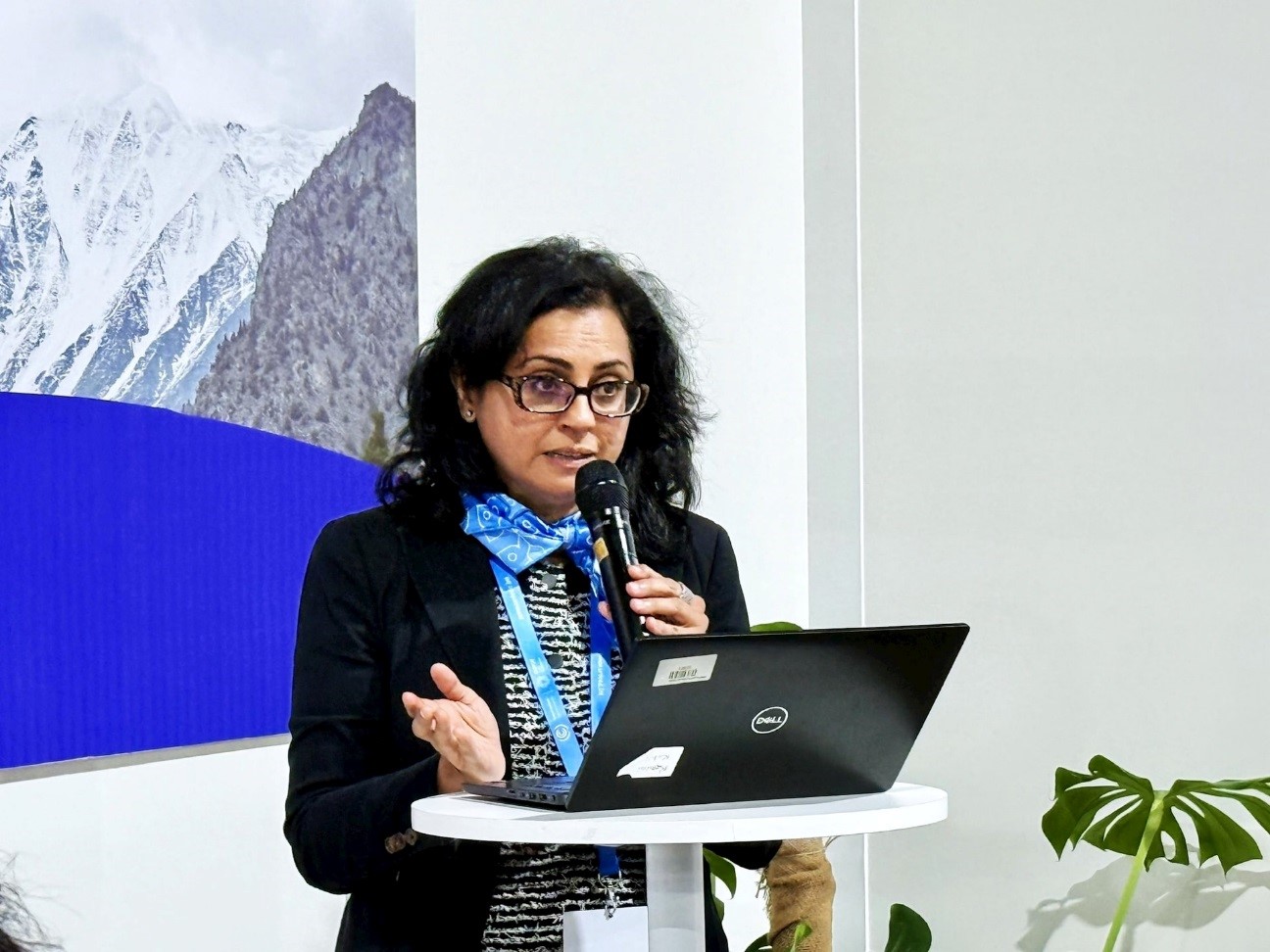On November 19, at the 29th Conference of the Parties to the United Nations Framework Convention on Climate Change (COP29) taking place in Azerbaijan, Deputy Minister of Natural Resources and Environment Le Cong Thanh chaired the event on Vietnam's updated National Climate Change Adaptation Plan (NAP) for the 2021-2030 period, with a vision to 2050.
Together with 59 countries that have completed and published NAPs, this is an important step for Viet Nam in developing solutions to enhance climate change resilience for natural, economic, social and human systems. The event, organized by the Ministry of Natural Resources and Environment in coordination with the United Nations Development Programme (UNDP), attracted the participation of government leaders, climate experts, multilateral funds and development partners.
Speaking at the opening ceremony, Deputy Minister of Natural Resources and Environment Le Cong Thanh said: Climate change adaptation is an important part of the global effort to respond to climate change to protect people, livelihoods and ecosystems, especially in developing countries.
 Deputy Minister of Natural Resources and Environment Le Cong Thanh speaks at the event
Deputy Minister of Natural Resources and Environment Le Cong Thanh speaks at the eventViet Nam has issued many policies and implemented many measures to enhance resilience to the impacts of climate change. Following the guidance of the United Nations Framework Convention on Climate Change (UNFCCC), Viet Nam has developed and implemented a National Climate Change Adaptation Plan (NAP) in 2020, and deployed a National Climate Change Adaptation Monitoring and Evaluation System at the national level. The NAP identifies specific priority tasks and solutions for 7 areas vulnerable to climate change.
After a period of implementation, Viet Nam has reviewed and updated the NAP based on practice, results achieved in the period from 2020 - 2023 and Vietnam's new commitments on climate change. The process of developing the Update Plan has had the active participation of many ministries, sectors, localities, research institutions, non-governmental organizations and development partners.
 Ms. Rohini Kohli, Senior Technical Advisor on Climate Change Adaptation Policy and Planning, United Nations Development Programme speaking at the event
Ms. Rohini Kohli, Senior Technical Advisor on Climate Change Adaptation Policy and Planning, United Nations Development Programme speaking at the eventViet Nam has proactively mobilized all domestic resources to effectively implement the NAP. However, like many developing countries, technology, capacity, experience and funding for climate change adaptation, mainly mobilized from the State budget, are limited and have not yet met the urgent needs of the community.
“The priority tasks identified in the Updated Plan are all inter-sectoral and inter-regional; requiring huge technical and financial resources for effective implementation. Therefore, Viet Nam calls for cooperation and support from countries, international organizations, and businesses to transfer advanced technology, access preferential capital sources; especially the implementation of specific measures to enhance resilience to the impacts of climate change for vulnerable communities and sectors in Viet Nam,” Deputy Minister Le Cong Thanh emphasized.
In the updated Plan, Viet Nam adjusts specific targets and groups of tasks and solutions to match the content on climate change adaptation in the National Strategy on Climate Change for the period up to 2050, the updated Nationally Determined Contribution (NDC) and development strategies and plans of relevant sectors and fields.
The plan identifies 162 priority tasks and solutions according to three main objectives: Improving resilience and adaptive capacity of natural, economic and social systems, ensuring sustainable livelihoods (76 tasks); Reducing disaster risks, minimizing damage caused by natural disasters and increasing extreme climate, contributing to minimizing losses and damage caused by climate change (33 tasks); Perfecting institutions, promoting potential and resources to effectively adapt to climate change (53 tasks).
Specific tasks are identified to reduce vulnerability, enhance resilience and adaptive capacity, prioritizing areas that are heavily impacted by climate change such as: natural resources and environment; agriculture, disaster prevention, construction, transportation, industry and trade, culture, sports and tourism, information and communication, labor and society. The plan also sets out tasks to minimize damage caused by natural disasters and extreme weather events that are increasing due to climate change, contributing to solving the problem of loss and damage caused by climate change. At the same time, perfecting institutions, promoting potential and resources to effectively adapt to climate change.
 Vietnamese representative shares updated content of National Climate Change Adaptation Plan (NAP)
Vietnamese representative shares updated content of National Climate Change Adaptation Plan (NAP)The updated NAP also adds specific tasks and solutions on applying sustainable livelihood development models, nature-based adaptation (NbA), ecosystem-based adaptation (EbA), community-based adaptation (CbA) models; along with tasks and solutions to contribute to solving the problem of loss and damage caused by climate change. In addition, tasks and solutions are added to attract participation and investment from the private sector in climate change adaptation, promoting the role of youth, women and communities in climate change adaptation.
Speaking at the event, Ms. Rohini Kohli, Senior Technical Advisor on Climate Change Adaptation Policy and Planning, UNDP said: “Rapid and effective adaptation is essential for Viet Nam, as climate change impacts increase vulnerability in already vulnerable communities. The updated NAP marks an important milestone, opening up opportunities to address potential loss and damage, while helping to mobilize the resources needed for a resilient future, protecting vulnerable communities and ecosystems. According to Ms. Rohini Kohli: “As a vulnerable country, Viet Nam needs to play a proactive role in international negotiations on loss and damage, contributing to the development of equitable and effective loss and damage reduction solutions through multilateral cooperation. UNDP is committed to supporting cooperation to attract national financing mechanisms.”
At the event, speakers and delegates discussed Vietnam's strategy on climate change adaptation, priority issues and especially ensuring sustainable finance, addressing important challenges in protecting vulnerable groups.